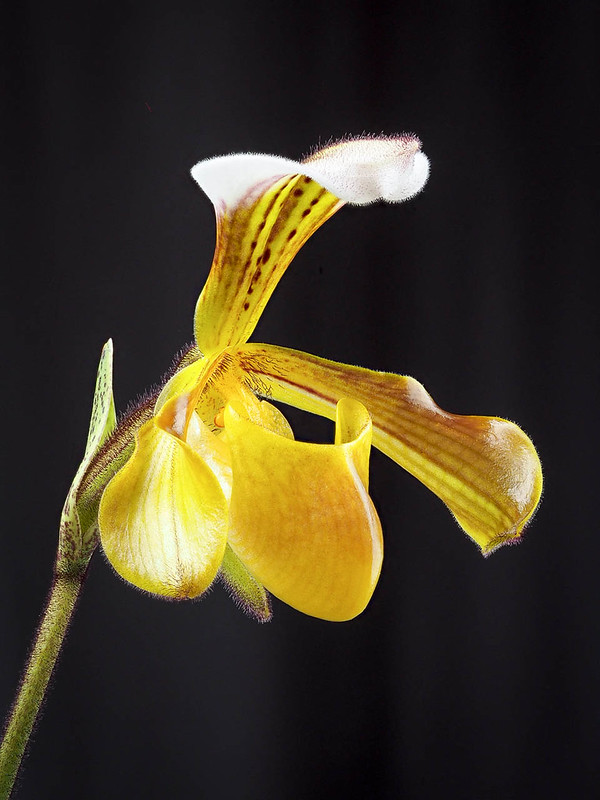
The original description of the species was based on a plant from Annam. Cribb (1998) mentioned that Annam is current day Laos. Averaynov et al (2003) speculated more specific type locality and it is supposedly from Attapeu Province, located in the south-east corner of Laos. I wonder where they got this supposition since the original description simply stated Annam (pdf of the original desciprtion available here). According to this wikipedia, Annam is the name used for Vietnam before 1940's (also see this link to Encyclopaedia Britannica). In 1985, after 80 years of the original description, this species was found in northern Vietnam (Vĩnh Phúc and Thái Nguyên Provinces; Averyanov 1988), far from the original locality. Averyanov et al (2003) mentioned an unconfirmed locality from Lào Cai and Lai Châu Provinces, which are in the north-west Vietnam, and disjunct from the other northern Vietnam locality. Additionally, they speculated that it occurs in the neighboring northern Laos, based on the availability from the local nurseries. Additionally, Liu et al. (2009) states that it occurs in Malipo county of SE Yunnan at 1800-1900m. Although it is widely available in cultivation, Averyanov et al. (2003) considered that this species is one of the most endangered species of Paphiopedilum in Vietnam. This opinion contradicts with Dr. Tanaka, who stated that it is common in N. Vietnam (link). Maybe there are more locality data now, or could he be talking about the abundance in cultivation, which may not represent the abundance in nature since it is one of the easiest species to grow.
The elevation range of this species is 900-1100m, but it may occur up to 1400-2000m based on unconfirmed information from local collectors (Averyanov et al. 2003). The region experiences a monsoon tropical climate with lots of precipitation; even in the winter (dry season), they receive lots of precipitation. The winter temperature can be low (daily average temperature of 8-12C), and the daily minimum temperature can be below freezing (Averyanov et al. 2003).
Most of the information above is from a book "Slipper orchids of Vietnam" by Averyanov et al (2003). I consider that this is the best book about Paphiopedilum. Unlike other monographs by Cribb and Braem, this book contains lots of interesting biology such as the habitat information, climatic data, associated flora etc. Their information appears to be based on their extensive fieldwork. Other monographs are just nomenclature, taxonomy, and classification. They are useful, but you don't learn much about the biology of plants. So if you are interested in learning about Paphiopdeilum, I highly recommend to start from Averyanov et al. (2003) although it does not contain all Paphiopedilum species.
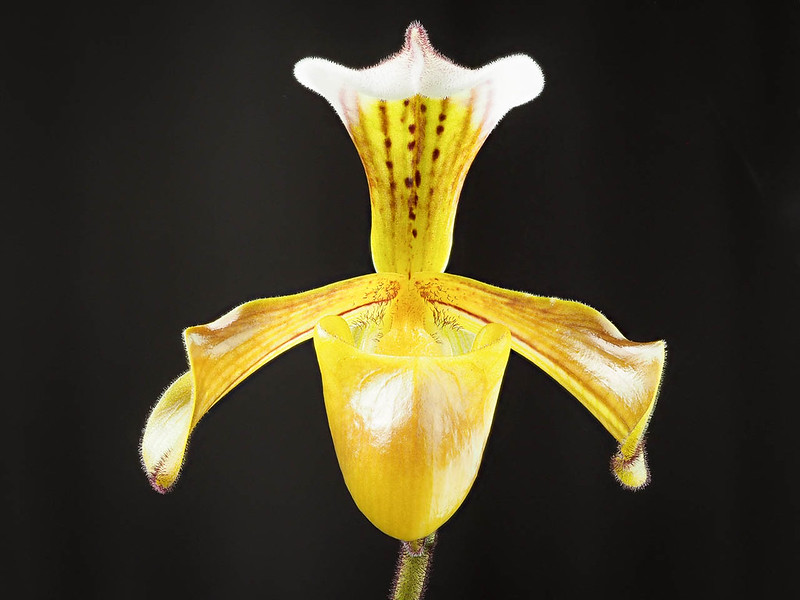
Christensonm (2004) wrote a short (not too scientific) article proposing that the real P. gratrixianum has a wide leaves (up to 4cm). He proposed that the narrow leafed ones, such as the one photographed above, are P. affinis, whose description is rather vague, and the type specimen is gone. However, his paper didn't present any convincing evidence (at least to me), and the original description of P. affinis doesn't match with the narrow-leafed P. gratrixianum. Most authors consider that P. affinis is a natural hybrid. So the narrow and the wide varieties appear to be just geographic variations.

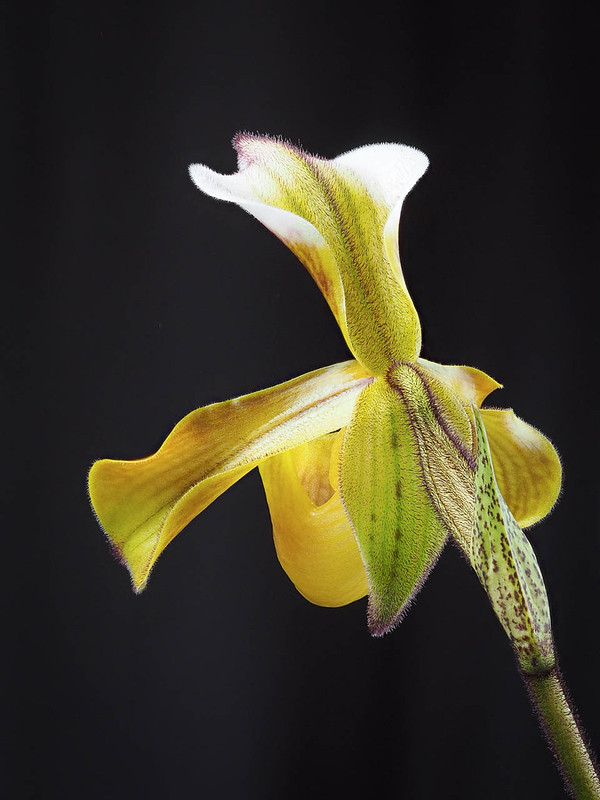
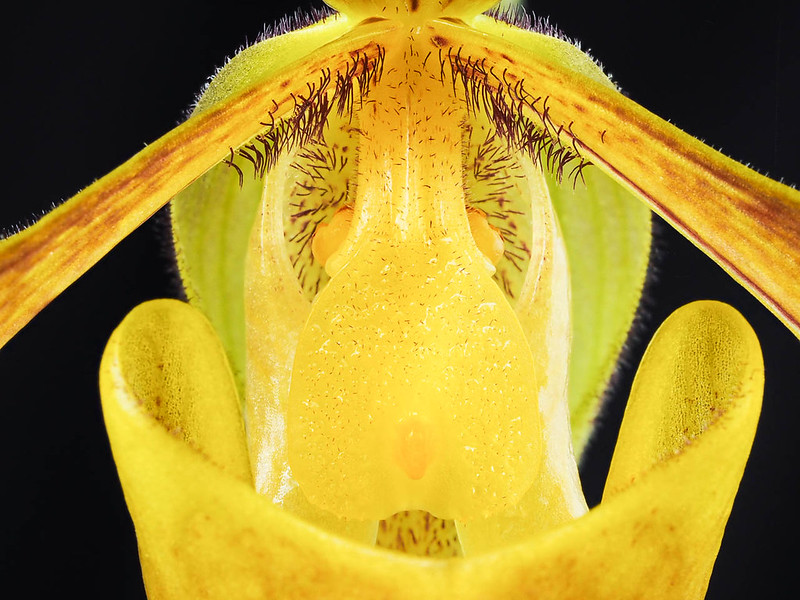
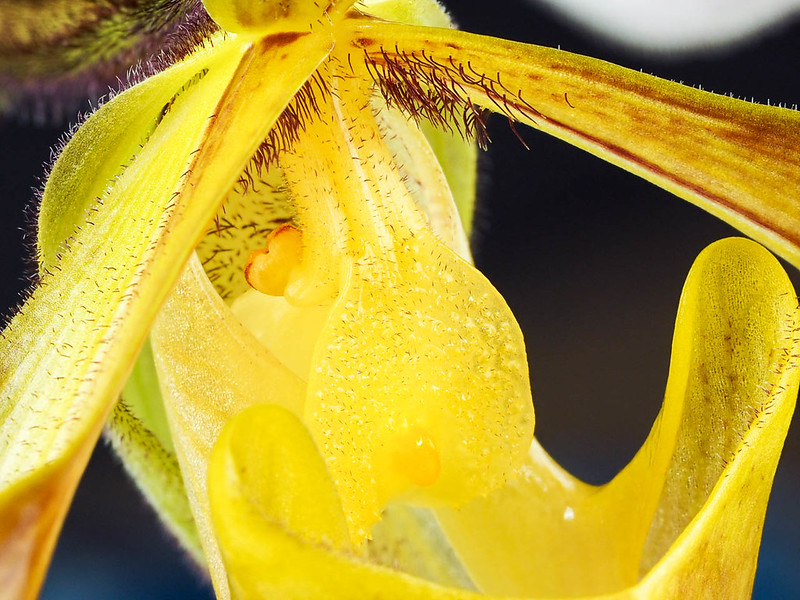

Grow log of this plant:
I obtained this plant in June, 2012 as a small seedling with 2.25" leaf length. I'm guessing that it was a couple months after deflasking at that time. After a couple month, around October 2012, I managed to pulled the plant out of the pot and broke all roots. It had 1-2 small roots previous to the accident. So I wrapped a twist tie around the base of the plant to stabilize the plant in the new pot.
 |
| Rootless Paphiopedilum gratrixianum, October 21, 2012. |
I also had Paphiopedilum helenae which lost all of the roots due to root rot around the same time.
 |
| Rootless Paphiopedilum helenae, October 28, 2012. |
I wrapped the bases of these two plants with live sphagnum moss, which I found in our neighborhood, and put the sphagnum moss ball on top of regular bark based potting mix.
 |
| Rootless Paphiopedilum helenae with live sphagnum moss. October 28, 2012. |
 | |
|
In the photo above, P. helenae had two leaves, but one leaf got dropped soon after the photo. I thought that P. helenae would be dead for sure with only one tiny leaf. On contrary to my expectation, the single leaf remained green for a long time, but I didn't notice any new growth for a long time (about 5-6months). But I noticed small leaves started to expand in the spring 2013.
 |
| Paphiopedilum helenae started to grow May 18, 2013. |
I removed the sphagnum moss and repotted both plants to normal bark based potting media in July 2, 2013, and they have grown amazing amount of roots.
 |
| Recovered Paphiopedilum helenae, July 2, 2013 |
 |
| Recovered Paphiopedilum gratrixianum, July 2, 2013 |
P. gratrixianum has been growing at a good speed, and it has about 9 growths. But somehow it hasn't bloomed until now (October 2017).
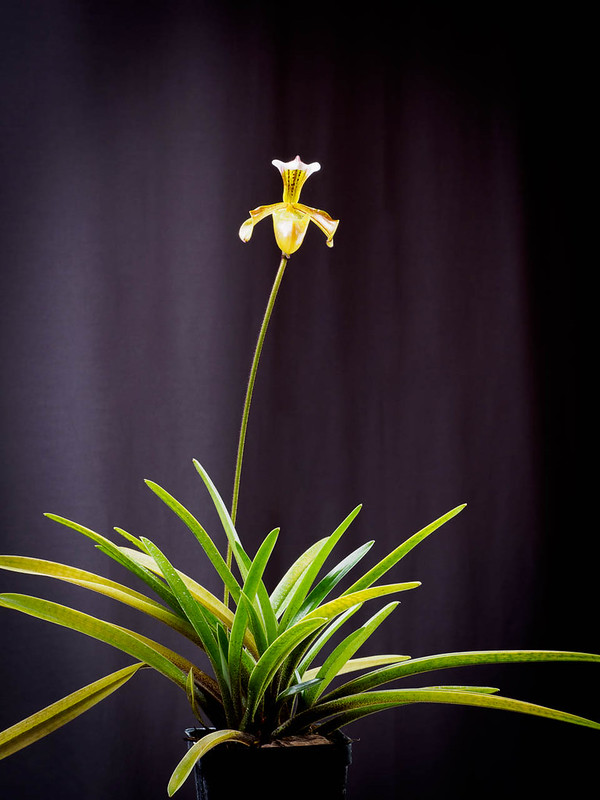 |
| First bloom, October 2, 2017, about 9 growths, including small ones. Leaves are yellowish because it is probably getting way more light than what it needs. |
As I mentioned, this species is probably one of the easiest Paphiopedilum species to grow. I grow it fairly warm; daily min/max temperature of 29/18C (84/65F) year around. This lack of winter may be the reason that it hadn't bloomed until now. For irrigation, it can take fairly moist or dry condition without any problems. I do keep the relative humidity around 80%, though.
Literature cited:
- Averyanov, L. V. 1988. New and rare species of the family Orchidaceae in the Vietnamese flora. Botanical Journal (Leningrad) 73 (6): 892-898.
- Averyanov, L. V., P. Cribb, P. K. Loc, N. T. Hiep, 2003. Slipper Orchids of Vietnam: With and Introduction to the Flora of Vietnam. Timber Press, Portland, Oregon, USA
- Christenson, E. A., 2004. The Rediscovery of Paphiopedilum gratrixianum. The Orchid Digest 68(3, July/Sept): 146-147.
- Cribb, P. 1988. The Genus Paphiopedilum, 2nd edition. Natural history Publications (Borneo), Sabah, Malaysia
- Liu, Z. J., S. C. Chen, L. J. Chen, and S. P. Lei. 2009. The Genus Paphiopedilum in China. Science Press, Beijing.
Excellent description of how you handled the rootless seedlings. I just potted up a bunch of very small seedlings of Phragmipedium kovachii and that twist tie idea would have been very useful. Thanks for the idea!
ReplyDeleteNice! I tried P. kovachii seedlings out of flask from Peruflora a couple years ago without a success. Earlier this year, I received a better quality flask from Troy Meyers. I hope they will do better than before. Good luck with yours!
DeleteWhy didn't you keep the helenae in the live sphagnum moss?
ReplyDeleteThe sphagnum moss was overtaken by the regular moss (as in May 18, 2013), and this kind of moss seems to make watering difficult, so I don't like it. It is also easier to synchronize the watering if it has the same type of media as other plants.
Delete